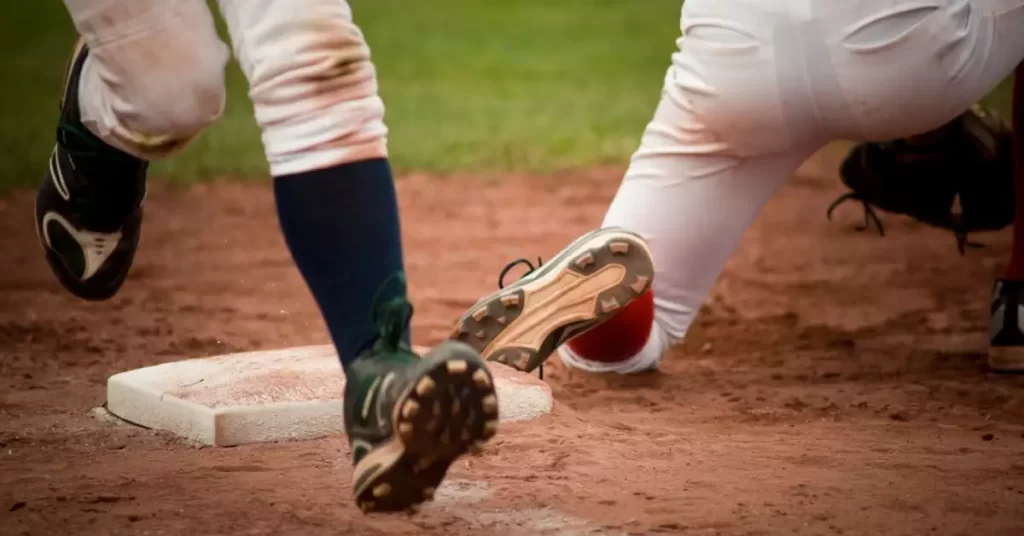Modern sports are continually evolving, and so is the equipment used by athletes. Among the essential gear are shoes designed to optimize performance on the field. One question that often arises is the interchangeability of footwear between sports, such as soccer cleats and softball shoes.
Soccer cleats and softball cleats have distinct characteristics tailored to the demands of their respective sports. This article delves into the differences between the two and explores the feasibility of using soccer cleats for softball, providing valuable insights for athletes and sports enthusiasts alike.
Read on to uncover the factors that determine whether soccer cleats can be utilized in softball games, allowing you to make an informed decision and optimize your performance on the field.
The Basics: Cleat Construction and Function
The Anatomy of a Cleat
Before we delve into the main differences between soccer and softball cleats, let’s briefly discuss the components that make up a cleat. Common elements include:
- Upper: The upper part of the shoe, which is typically made of leather, synthetic materials, or a combination of both. This part of the cleat provides support, comfort, and protection.
- Midsole: The cushioned layer between the upper and the outsole that absorbs shock and provides stability during play.
- Outsole: The bottom part of the shoe, responsible for providing traction and stability on the playing surface. It’s typically made of rubber, TPU, or other synthetic materials.
- Cleat Pattern: The arrangement of studs or spikes on the outsole to enhance traction and grip on various surfaces.
The Purpose of Cleats
Cleats are specifically designed to provide athletes with optimal traction, stability, and support during play. By improving grip on the playing surface, cleats help players perform at their best and reduce the risk of injuries.

Soccer Cleats vs. Softball Cleats: Key Differences
Outsole and Cleat Pattern
The most noticeable difference between soccer and softball cleats is the arrangement and type of studs or spikes on the outsole. Soccer cleats typically have shorter, round, and evenly spaced studs that provide optimal traction on grass or artificial turf surfaces.
In contrast, softball cleats have longer, thinner spikes that are usually arranged in a combination of patterns for enhanced grip on dirt and grass fields.
Toe Cleat
Softball cleats often feature an additional spike at the toe, known as a toe cleat. This extra cleat provides increased traction during sudden stops, starts, and quick direction changes.
Soccer cleats, on the other hand, do not have a toe cleat, as soccer players mainly rely on their feet’s sides and instep for ball control.
Midsole Cushioning
Softball cleats usually have more cushioning in the midsole than soccer cleats. This extra cushioning is designed to provide support and comfort during the high-impact movements that are common in softball, such as sprinting and sliding.
Ankle Support
Softball cleats are available in both low-top and mid-top styles, with the latter offering more ankle support for players who require additional stability. Soccer cleats are generally low-top, prioritizing freedom of movement for the foot and ankle.
The Verdict: Can You Use Soccer Cleats for Softball?
While soccer cleats may seem like a suitable alternative for softball due to their similar appearance, the differences in cleat pattern, toe cleat, midsole cushioning, and ankle support make them less than ideal for the sport.
Using soccer cleats for softball may result in reduced traction, stability, and support, ultimately affecting your performance and increasing the risk of injuries.
FAQs
Can I use soccer cleats for other sports like football or baseball?
Soccer cleats are not recommended for football or baseball because these sports require specific cleat designs for optimal performance and safety. Football cleats, for example, have thicker, more pronounced spikes for better grip on grass, while baseball cleats have a toe cleat and different spike patterns for better traction and stability on the field.
Are there any benefits to using soccer cleats for softball?
There may be some situations where soccer cleats could be used as a temporary solution for softball, such as in a casual, non-competitive game or during practice. However, for optimal performance, safety, and compliance with league rules, it is best to use cleats specifically designed for softball.
What should I consider when choosing the right softball cleats?
When selecting the appropriate softball cleats, consider factors such as comfort, fit, support, and the type of surface you will be playing on.
Look for cleats with the right spike configuration for your playing field (metal, molded, or turf) and choose a style that offers the level of ankle support you need. Additionally, prioritize high-quality materials and construction for durability and comfort.
Final Thoughts
The interchangeability of sports equipment is a topic worth exploring to ensure optimal performance and safety. While soccer and softball cleats share some similarities, their differences make them better suited for their respective sports.
Ultimately, the choice is yours, but it is essential to prioritize comfort, safety, and performance. Investing in the appropriate footwear for each sport is a small price to pay to enhance your abilities and minimize the risk of injury, ensuring that you can enjoy the game to the fullest.

